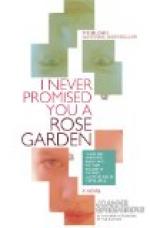In the back part of your lily-of-the-valley bed plant two or three rows of the lovely poets’ narcissus (poeticus). It opens its white flowers of the “pheasant’s eye” cup at the same time as the lilies bloom, it grows sufficiently tall to make a good upward gradation, and it likes to be let severely alone. But do not forget in covering in the fall to put leaves over the narcissi instead of manure. Of other daffodils and narcissi that I have found very satisfactory, besides the good mixtures offered by reliable houses at only a dollar or a dollar and a quarter a hundred (the poets’ narcissi only costing eighty cents a hundred for good bulbs), are Trumpet Major, Incomparabilis, the old-fashioned “daffy,” and the monster yellow trumpet narcissus, Van Sion.
The polyanthus narcissi, carrying their many flowers in heads at the top of the stalk, are what is termed half hardy and they are more frequently seen in florists’ windows than in gardens. I have found them hardy if planted in a sheltered spot, covered with slanted boards and leaves, which should not be removed before April, as the spring rain and winds, I am convinced, do more to kill the species than winter cold. The flowers are heavily fragrant, like gardenias, and are almost too sweet for the house; but they, together with violets, give the garden the opulence of odour before the lilacs are open, or the heliotropes that are to be perfumers-in-chief in summer have graduated from thumb pots in the forcing houses.
[Illustration: THE POET’S NARCISSUS.]
Unless one has a large garden and a gardener who can plant and tend parterres of spring colour, I do not set much value upon outdoor hyacinths; they must be lifted each year and often replaced, as the large bulbs soon divide into several smaller ones with the flowers proportionately diminished. To me their mission is, to be grown in pots, shallow pans, or glasses on the window ledge, for winter and spring comforters, and I use the early tulips much in the same way, except for a cheerful line of them, planted about the foundation of the house, that when in bloom seems literally to lift home upon the spring wings of resurrection!
All my tulip enthusiasm is centred in the late varieties, and chief among these come the fascinating and fantastic “parrots.”
When next I have my garden savings-bank well filled, I am going to make a collection of these tulips and guard them in a bed underlaid with stout-meshed wire netting, so that no mole may leave a tunnel for the wicked tulip-eating meadow-mouse.
It is these late May-flowering tulips of long stalks, like wands of tall perennials, that you can gather in your arms and arrange in your largest jars with a sense at once combined of luxury and artistic joy.




